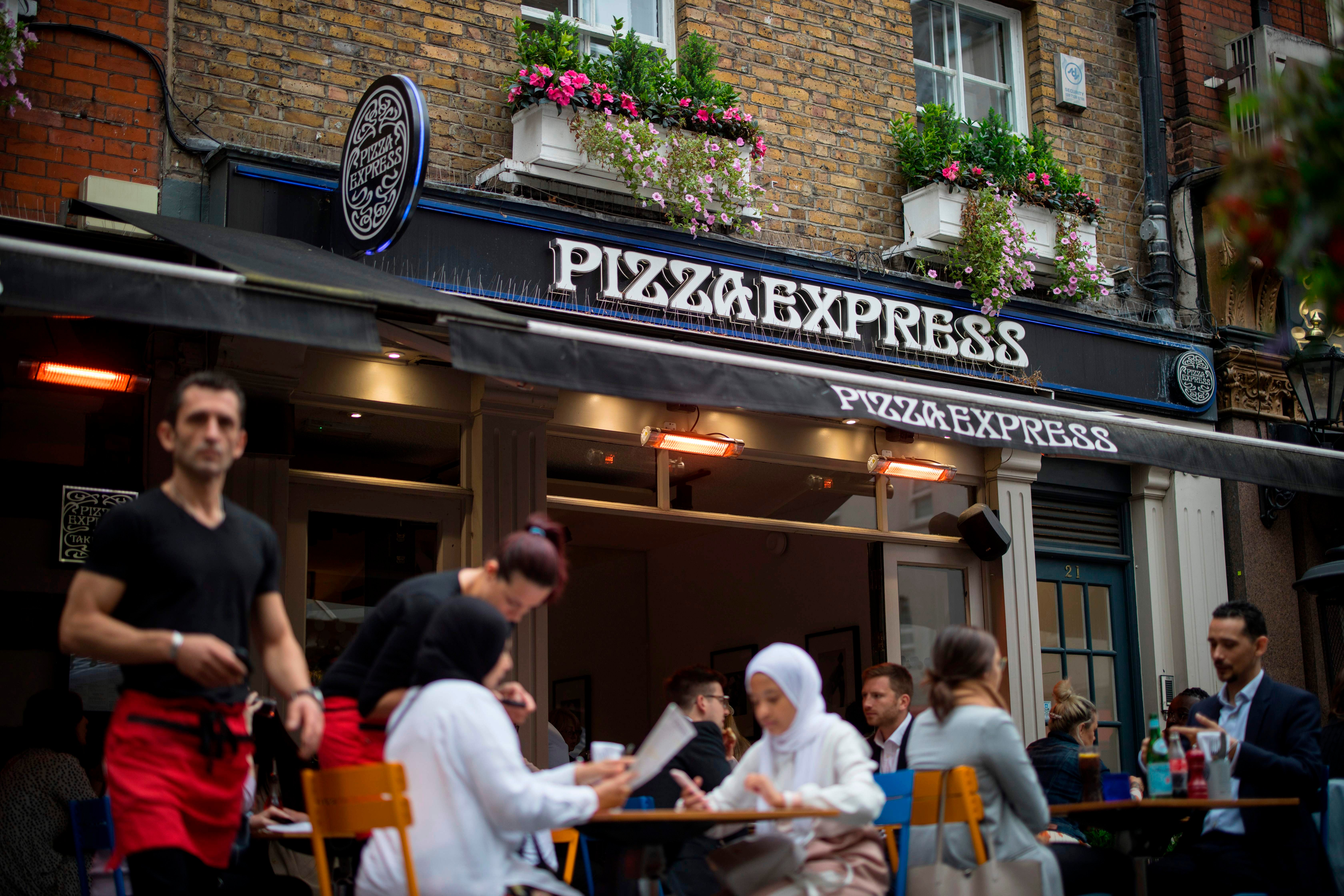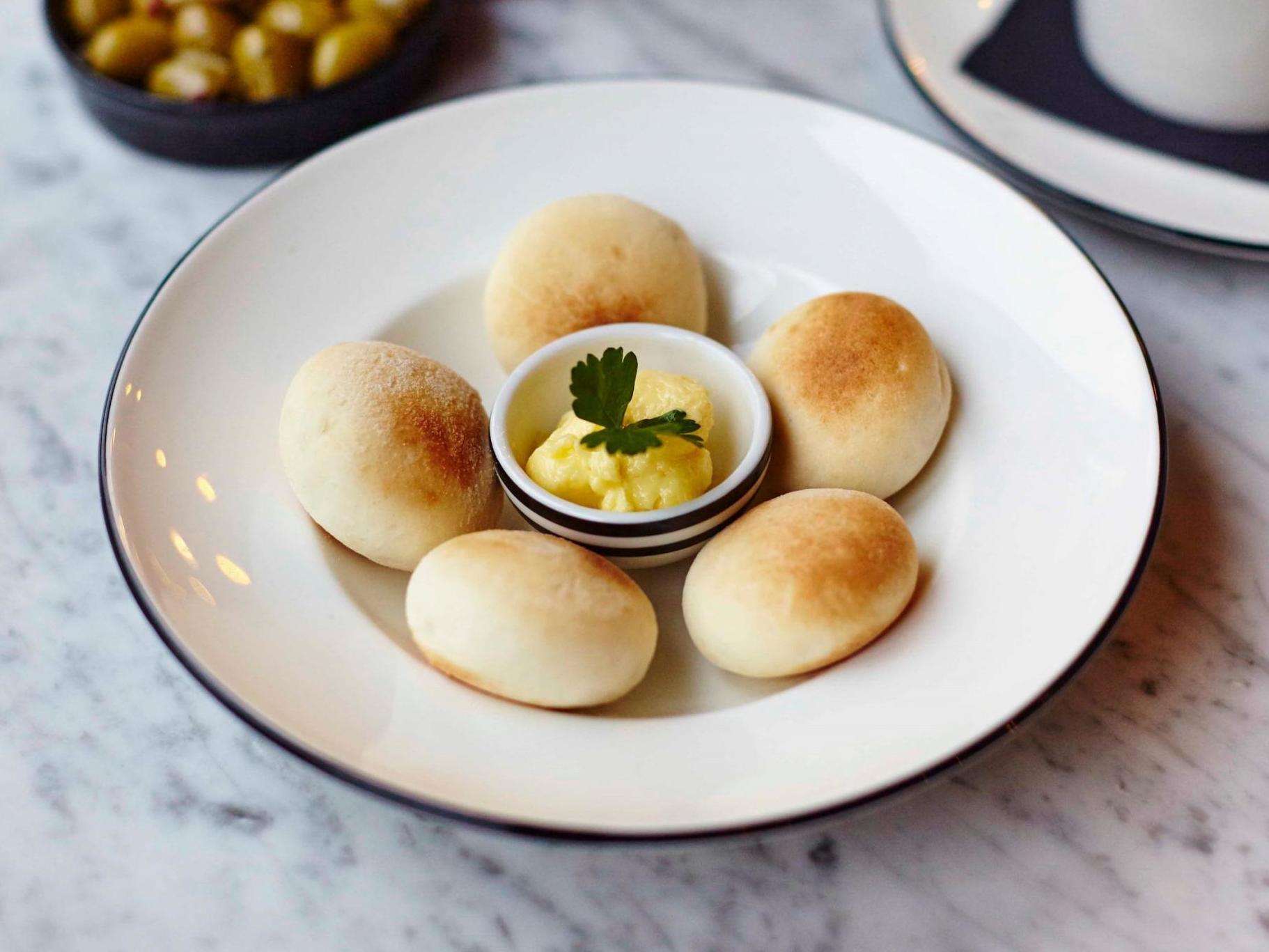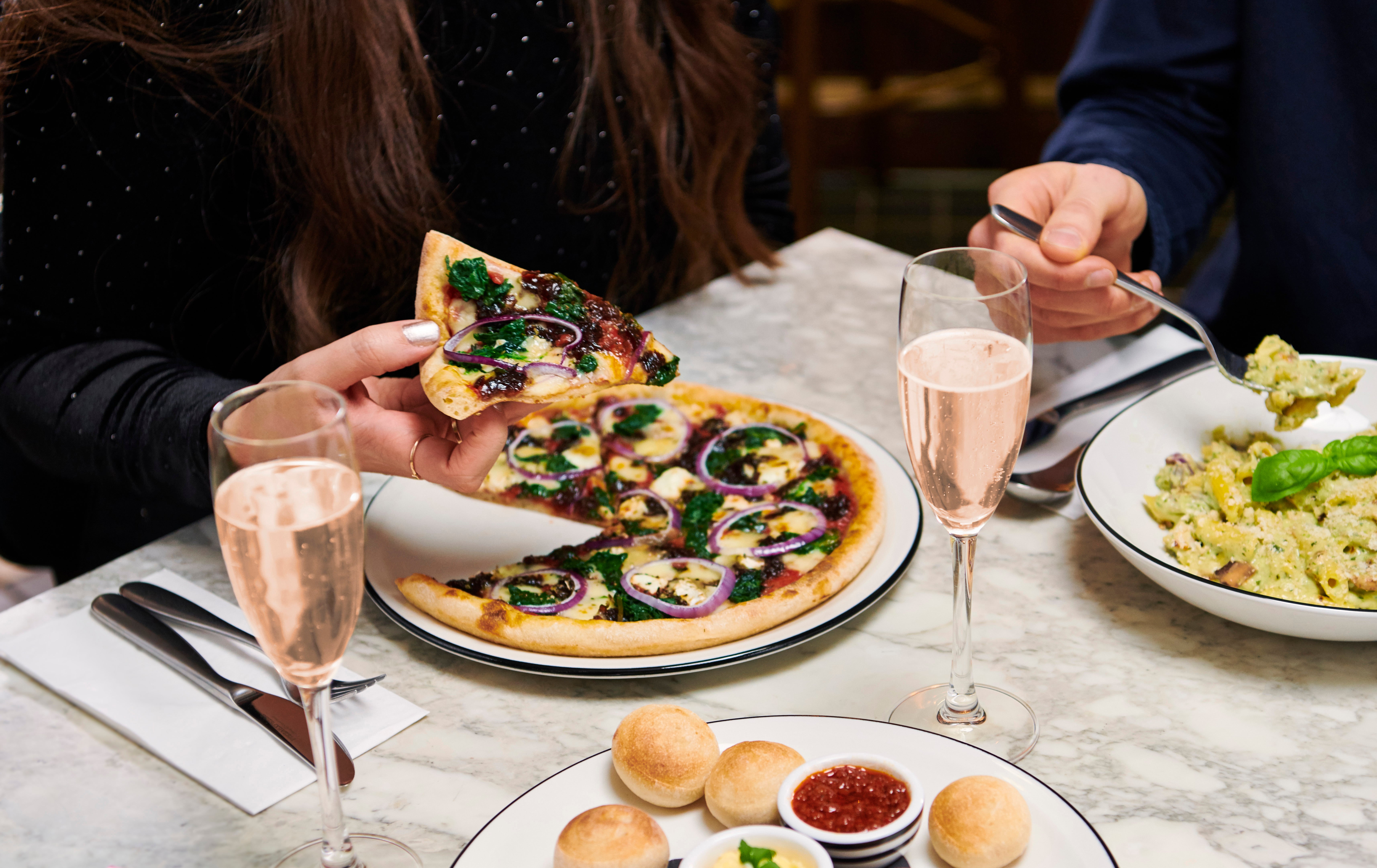Pizza Express will be serving classics at 1965 prices to celebrate 60 years, but does it still have a place on the high street?
For decades, Pizza Express was a high street institution – first dates, family dinners and dough balls with just cold enough garlic butter. But as it turns 60, with debts mounting and pizza trends moving on, is Britain’s most famous pizzeria still the icon it once was? Josh Barrie takes a look

In the early Noughties, my mum worked as a server at our local Pizza Express. Back then, the chain was as strong as ever, a reliable option in London and a lifeline in Britain’s smaller towns. There would be a Pizza Express on the high street just as there would be a McDonald’s on the most depressing of roundabouts. Both were equally a consistent, mannered option that working families could afford.
As for me, Pizza Express was free. My mum would get a pizza for lunch whenever on shift. Sometimes she would eat it herself, but more often than not she would bring it home, and there, on the table in the kitchen after school, would be an American Hot in all its glory. A pre-dinner snack for a hungry young teenager. It felt like luxury.
That’s my little dose of nostalgia with Britain’s most famous pizzeria. Similar sentiments extend to countless others. “I fondly remember when they opened in Streatham High Street in the late Eighties,” says James Chiavarini, owner of Il Portico, one of London’s oldest family-run Italian restaurants. “It was an absolute game-changer. We never went (my dad refused) but on occasion, my mates would talk about it and we would only dream as kids.”
By the Eighties, Pizza Express was long established, well into its pomp and not yet past its prime. The fact the chain is celebrating its 60th birthday this month is impressive, especially given hospitality is such a taxing, trying trade.
It was in 1965 that founder Peter Boizot opened his first Pizza Express in Soho with an oven shipped over from Naples. Back then, he sold 10p slices on greaseproof paper, in a part of London still significantly Italian. Before long the brand established itself around the capital, then the country, hailed for the cool of its Enzo Apicella-designed restaurants and for the Roman, tonda-style pies it still sells today: thin, crispy and made from a relatively dry dough that has a short maturation time.
There was still something of a romance to pizza then, an intrigue. This was Britain, a country unwitting of anything like triple-cooked chips or scallops with pancetta and peas. Balsamic glaze had yet to take hold. God forbid.
Even during the Nineties and early Noughties, the restaurants were full. They painted a Richard Curtis sort of picture: busy, elegant, full of fortysomething professionals who had more money than they would ever let on sipping OK pinot grigio and being suave with rocket leaves and parmesan.
It was then that what might be the last loyal generation – mine – were captured, if not by the food than by the blessed Orange Wednesdays deal which, thanks to a lucrative code for those lucky mobile customers, meant free dough balls and two-for-one pizzas, not to mention two-for-one cinema tickets afterwards. What a date night that was. Every Wednesday afternoon, in the last lesson of the day, a chaotic scrabble for codes would unfold.

“I still love it,” says Jess Corrigan, who works in PR for high-end restaurants. “I’ve lost count of how many times I’ve visited the Muswell Hill branch. My go-to order is an American Hot with garlic butter on the side for the crusts and a Diet Coke.
“I always thought the glass bottles, white marble tables, mirrored walls and jazz-inspired playlist had such a chic vibe when I was younger. I never had a Pizza Express party but now I’m turning 30 this year, I might.”
Even today’s top pizza makers, Britain’s feted food renaissance long since having taken place, aren’t opposed to old charms. Tom Vincent, from Vincenzo’s Pizza near Watford – due to expand into London this year, by the way (I wish I could tell you where, because Oh my God) – concedes it was a point of fascination if contention in his younger years: “I ate there growing up. We didn’t really have many options. It was deep pan, Pizza Express, or a local independent place, L’Artista, which I preferred. But my friends always wanted to go to Pizza Express.
I always thought the glass bottles, white marble tables, mirrored walls and jazz-inspired playlist had such a chic vibe when I was younger. I never had a Pizza Express party but now I’m turning 30 this year, I might
“It’s impressive they’ve been going so long. I didn’t realise. You can see the impact – people ask me for doughballs all the time and I imagine they introduced pizza to a lot of people who wouldn’t have had it before back in the day. Maybe I’ll do a version of their Sloppy Giuseppe. That’s what I used to order.”
In more recent years, memories have faded and pizza has evolved in Britain. First came the over-documented Neapolitan wave, and then styles from America arrived with aplomb. Today there are Sicilian variations, even pizzas that some argue are “London” in form (see: Yard Sale). What was almost exotic became largely passe; Pizza Express’s pioneering plates, synonymous as they were, were no longer en vogue.
This, coupled with economic challenges that began with the credit crunch in 2008, pushed on by way of Brexit and hit harder still during the pandemic – let’s not forget Rachel Reeves’s forthcoming Budget – have led to difficult times for Pizza Express. At 60, it might be less thriving patriarch, more unwell grandfather.
News of Pizza Express’s demise hit home in 2019, when a keen threat of administration loomed. It was around the same time that the brand tried and failed to kickstart a by-the-slice offshoot (tradition, let’s not forget) in London called Za. Financiers warned that two in five of the chain’s circa 500 branches could close. A year later, predicted numbers were less grating, with 70 shutting, but problems continued into 2021 when the pandemic exacerbated an existing slowing of trade. About 100 restaurants closed after the company entered a company voluntary agreement. Hundreds of jobs were lost; a treasured brand was suddenly fretted over.
Fast-forward to now and things are rosier but far from golden. Sales are strong, recent reports have said, but profits are down. There is a lot of talk of debt. Most recently, it was reported that Pizza Express shareholders could soon inject millions into the chain as the casual dining industry braces for tax rises in April. Already there are deals ongoing to refinance old debts acquired long before the current government ramped things up.

So what now? Pizza Express is optimistic, making savvy marketing moves – between 5-6pm on Thursday 27 March, pizzas will be sold at 1965 prices (a Margherita will be 33p and an American Hot, 50p) – and boasting a now three-year-old loyalty programme with more than 2 million members. There are bold new pizzas: the Queen Margherita features a whole burrata. Obviously.
Unsurprisingly, CEO Paula MacKenzie appears roundly positive. She tells me: “[Since 1965], we’ve been synonymous with proper pizza, black and white stripes and all the icons – from dough balls and garlic butter to the American Hot.
“We have adapted to trends and taste buds over the past six decades … Our recipes have stood the test of time – there’s not many brands where you don’t even need to look at the menu before ordering, and to us, that’s pretty iconic.”

I cannot help but wonder whether Pizza Express will be here in another 60 years. For the record, I hope so. The Romans left long ago but Roman pizza needn’t (just let me make the joke). Even the best chefs love dough balls: “F***ing life-changing at uni”, chef Sally Abe chimes.
Perhaps Restaurant magazine editor Stefan Chomka sums it up best: “Pizza Express has undoubtedly shaped the high street restaurant scene and the way people eat today…
“[They] introduced people to spicy Italian sausage ’nduja through a tie-up with Calabrian chef Francesco Mazzei [in 2010] beating the supermarkets to the trend by years.
“And it has long been the go-to place for affordable first dates, family occasions and student meals and has remained a reassuringly consistent comfort in a world of rapidly changing food trends.
“Its lustre may have faded, but the world would be a poorer place without dough balls (with slightly too cold garlic butter) and the unmistakable aroma of the Sloppy Giuseppe.”






Join our commenting forum
Join thought-provoking conversations, follow other Independent readers and see their replies
Comments